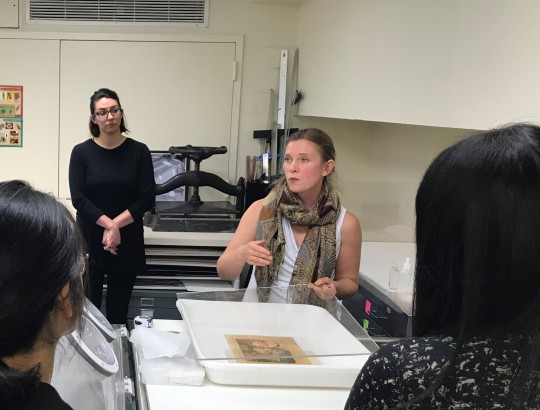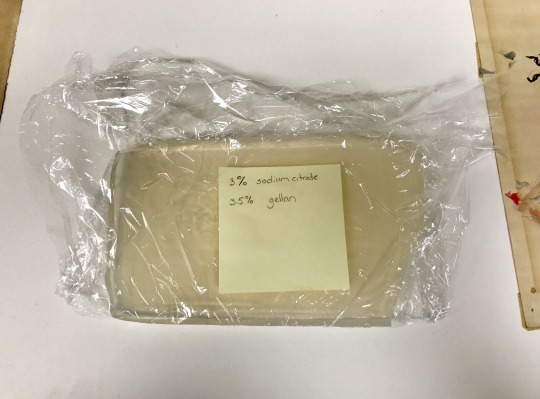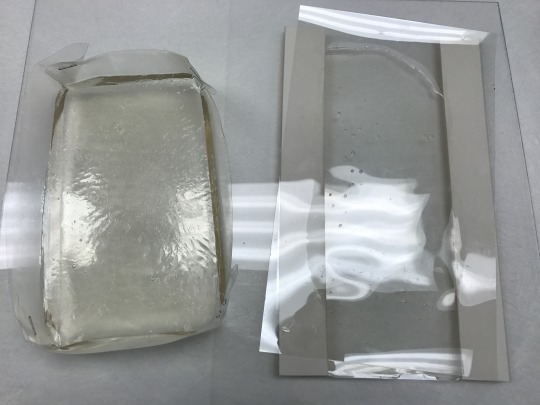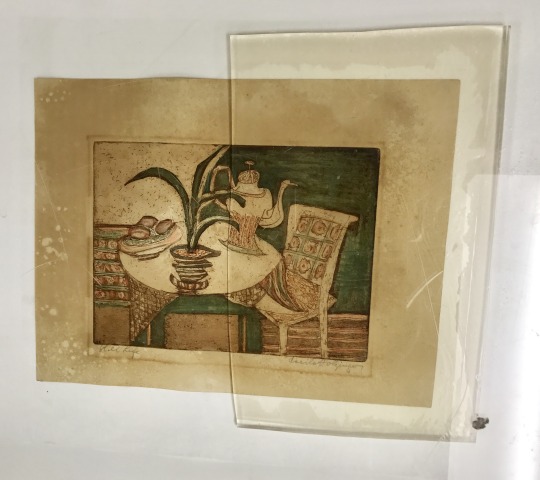by Kat Fanning, Preservation
Associate at the Center for Jewish History

The first time that I started to
take notice of the multitude of possibilities that applications of gellan was
capable of was at my very first AIC conference in 2016, the 44th annual meeting
in Montreal, Quebec. I’ve been waiting to test its potential ever since. And on
Thursday, November 30th, I finally got to test it out!
Preservation Services Manager,
Jennifer Sainato, in the Cahnman Preservation Laboratory at the Center for
Jewish History arranged to host a gellan gum workshop with Heather Hendry of the
Conservation Center for Art & Historic Artifacts. We had participants from
many institutions; Yale, NYAM, NYHS, Brooklyn College, Cooper Hewitt, etc.
A quick note on gellan –
“Gellan is a rigid
polysaccharide gel with a wide range of uses in conservation. Gellan is used at
CCAHA for washing items with water sensitive media; stain reduction; removal of
backings, tapes, and adhesive residues; solvent delivery; and application of
chelating agents. Through presentations, demonstrations, and hands-on
activities, participants will collaboratively explore the wide potential of
gellan treatments.“
Heather guided us through a brief
overview of gellan and some of its applications. Different concentrations are
useful for different things. For example, a ~3.5% gel application is a good way
to introduce moisture slowly to a broad range of materials. A 5% gel is
fantastic for various treatment of very water sensitive material.

Then we learned how to make it. It
is a relatively simple process, utilizing the microwave. It is possible to make
varying thicknesses and concentrations of gellan for different applications.
Just be sure that if you are using the break room microwave, that it is not
around lunch time.

Finally, we were able to experiment
with the samples that Heather was kind enough to bring with her. Tape removal
is always fun *sarcasm*.[1]
Every conservation professional should have an arsenal of removal methods for
the hundreds of types of tape available in the world. In this workshop, we
experimented with various kinds of tape with water soluble adhesive. Previously
to this workshop, I usually use a combination of SCMC, heat, and/or water to
remove water soluble adhesive. Sometimes it is very difficult. Participants
were even able to significantly reduce dark water staining from book cloth on a
bound volume. Unlike SCMC, there is also no shiny residue left behind that
needs to be cleaned.


My takeaways from the workshop were
that:
1.
Preparation is not as difficult as
it seems. Just be sure to use metric to make life easy!
2.
The use of gellan is a fantastic
tool to keep in the toolbox for
a.
slow introduction of moisture or
solvent
b.
great and simple method for removing
water soluble adhesive.
Thanks to the generous
assistance of the Center for Art and Historic Artifacts and the the Center for
Jewish History for hosting this hands-on workshop for local paper
conservators. We in the Gisela and Levi Cahnman Preservation Laboratory at
the Center for Jewish History look forward to hosting future workshops for
conservation professionals. For more information, please email us at cjhpreservation@cjh.org. Be sure to follow our instagram:
https://www.instagram.com/centerforjewishhistory/
[1] I only know that time travel is not possible in my
lifetime because if it had been, I would have traveled back in time and
prevented so much tape application!
